The Intel SSD 540s (480GB) Review
by Billy Tallis on June 23, 2016 9:00 AM ESTRandom Read Performance
The random read test requests 4kB blocks and tests queue depths ranging from 1 to 32. The queue depth is doubled every three minutes, for a total test duration of 18 minutes. The test spans the entire drive, which is filled before the test starts. The primary score we report is an average of performances at queue depths 1, 2 and 4, as client usage typically consists mostly of low queue depth operations.
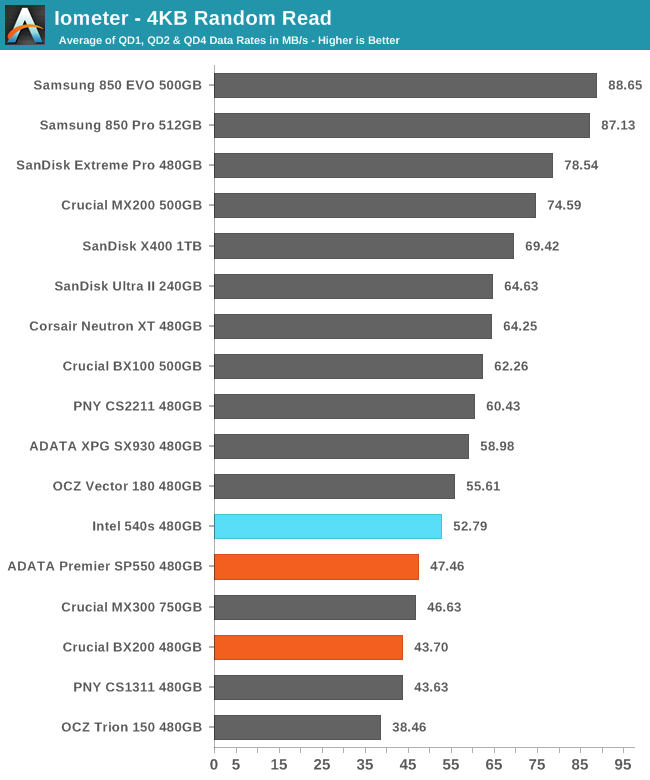
The random read speed of the Intel 540s is a significant improvement over both SM2256 drives and Phison S10 TLC drives, but isn't quite as fast as the MLC drives or SanDisk and Samsung TLC.
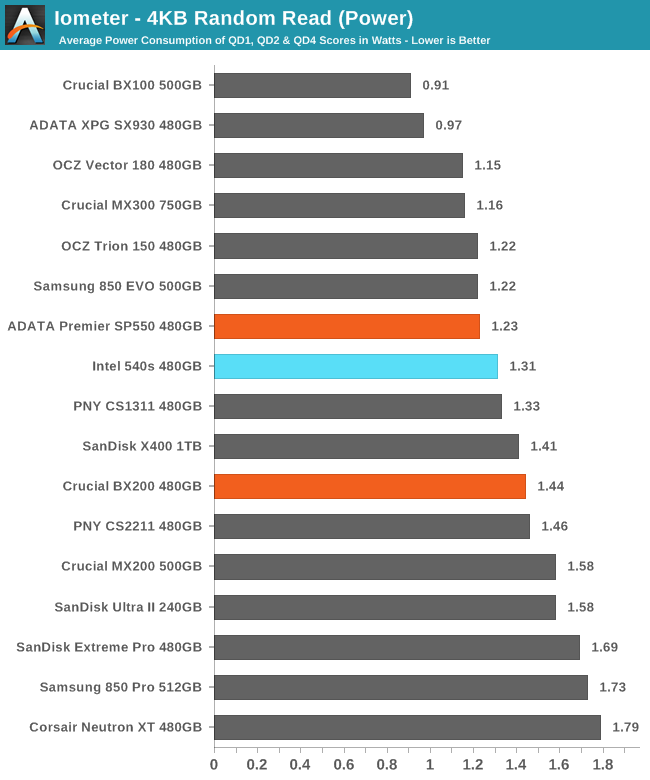
Power usage of the Intel 540s was slightly higher than the SP550, but given the performance increase their efficiency is similar and good overall.
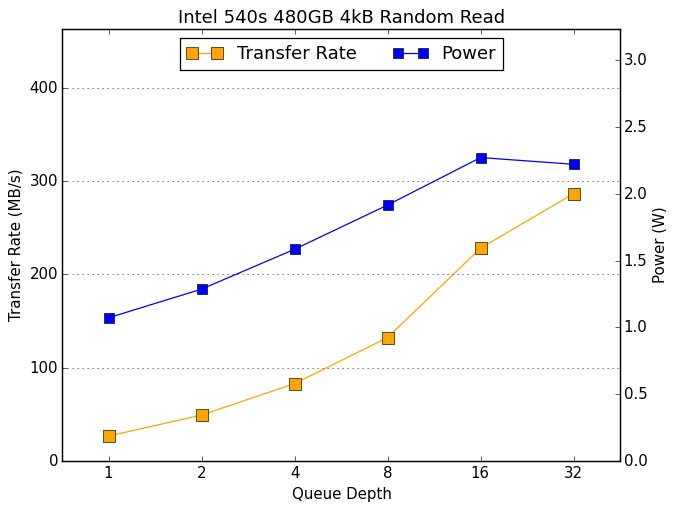 |
|||||||||
The Intel 540s drew more power and delivered more performance than the SP550 at every queue depth until QD32, where the SP550 performed slightly better.
Random Write Performance
The random write test writes 4kB blocks and tests queue depths ranging from 1 to 32. The queue depth is doubled every three minutes, for a total test duration of 18 minutes. The test is limited to a 16GB portion of the drive, and the drive is empty save for the 16GB test file. The primary score we report is an average of performances at queue depths 1, 2 and 4, as client usage typically consists mostly of low queue depth operations.
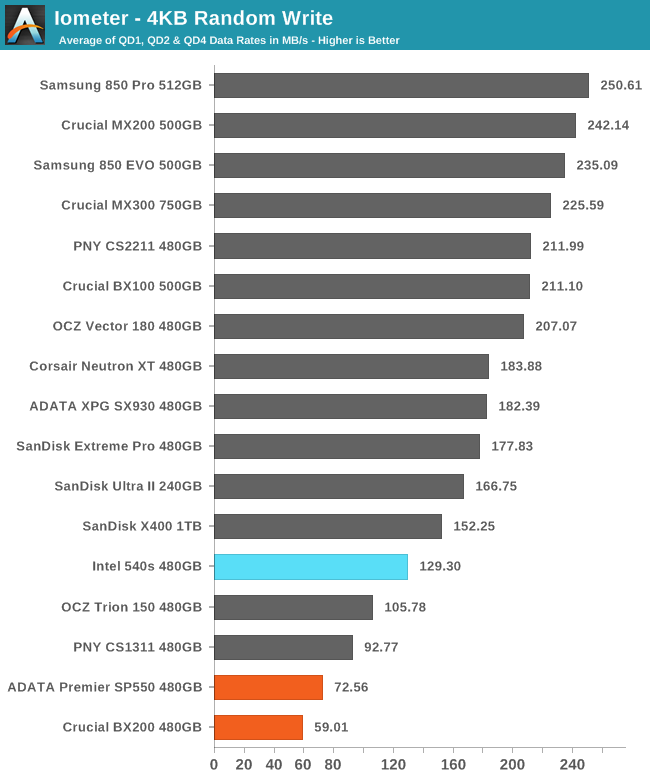
The Intel 540s shows almost double the performance on the random write test that the SM2256 drives did. This puts it well ahead of the Phison-based TLC drives and close to SanDisk's TLC drives.
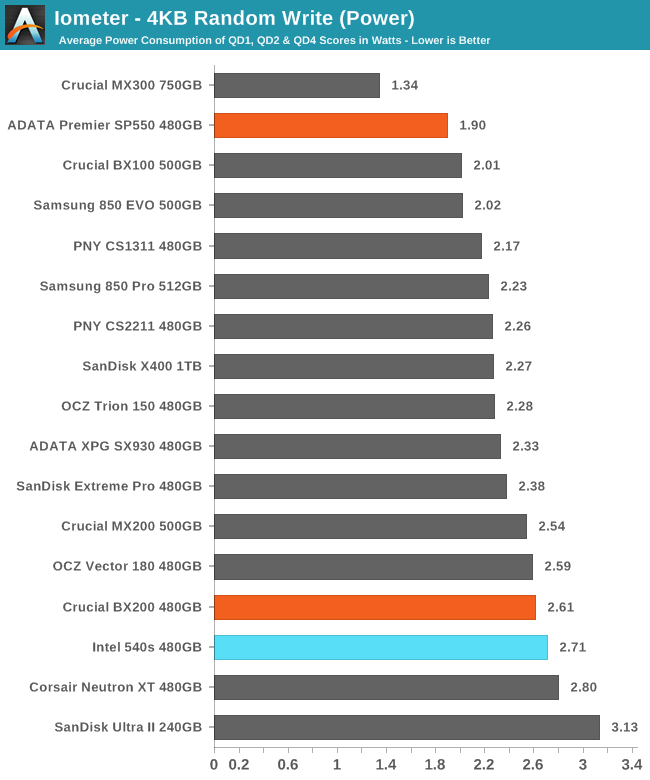
The Intel 540s had relatively high power draw during the random test, but it certainly wasn't the least efficient drive.
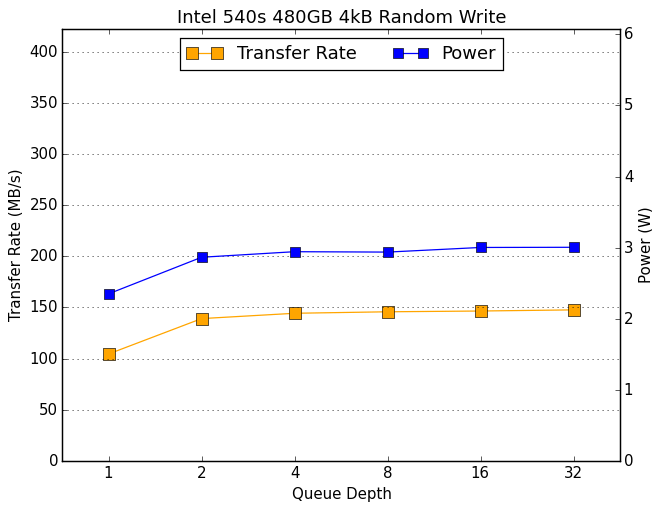 |
|||||||||
The random write performance of the Intel 540s increases moderately from QD1 to QD2 and only very slightly after that. The SM2256 drives started out slower and stayed there, though the BX200 drew more power with higher queue depths. Most budget TLC drives show relatively little scaling with queue depth here, with a few exceptions like the OCZ Trion 150 jumping up from QD4 and QD8.










77 Comments
View All Comments
Stuka87 - Thursday, June 23, 2016 - link
So disappointing. I bought up some Intel 740's because they were being discontinued. Glad I did now.prime2515103 - Thursday, June 23, 2016 - link
Did that BX200 really pull 45.69 watts in The Destroyer or is that a typo? How is that even possible?JoeMonco - Thursday, June 23, 2016 - link
The drive is broken garbage. That's how.Billy Tallis - Thursday, June 23, 2016 - link
That's Watt-hours. The Destroyer takes a typical SATA drive around 12 hours to run, so most drives are averaging a little over 1W.prime2515103 - Friday, June 24, 2016 - link
Oh I see... I'm going to have to read the testing methodology again, it's been awhile.cbjwthwm - Tuesday, June 28, 2016 - link
Did you do any re-testing of the drive with the firmware update 031C Intel released for it? It's too bad it can only be updated via ISO vs the Toolbox, and I found the ISO buggy (claimed it failed, but actually updated ok) which they have since pulled for "maintenance" ;)darkfalz - Friday, June 24, 2016 - link
Why does AT waste time reviewing a market segment where there is something like 5% noticeable difference across the board? And yet still haven't reviewed 10x0 series...vladx - Friday, June 24, 2016 - link
Guess the replacement for my Samsung 840 Evo is still going to be Sandisk X400. Intel's new SSD is a dissapointment.zodiacfml - Sunday, June 26, 2016 - link
Why? I guess, someone decided that the company should have a product at this price.fanofanand - Monday, June 27, 2016 - link
So Intel wants to charge the "Intel premium" while none of the components are Intel designed or made? Oh how the mighty have fallen. Between this drive, the $400 compute stick, and $1700 consumer CPUs, Intel is showing us just how out of touch they are with today's consumer markets.